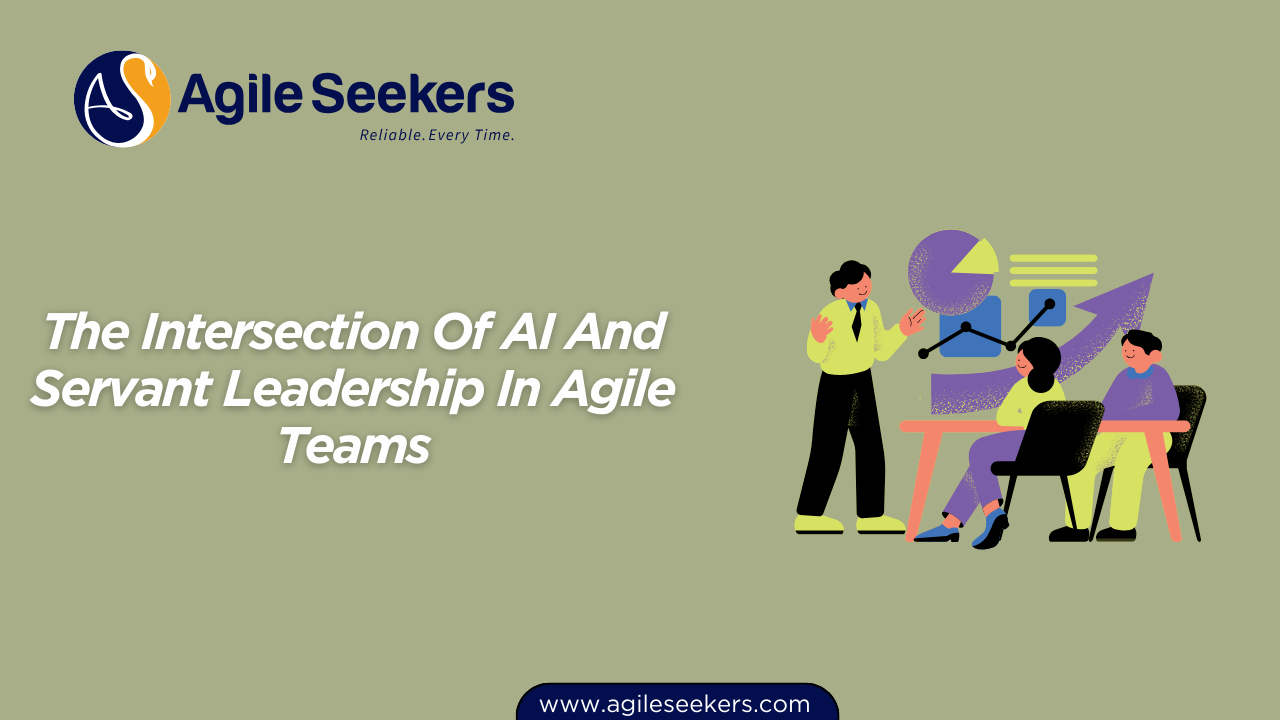The Intersection Of AI And Servant Leadership In Agile Teams

The conversation around Agile has always centered on people—how they collaborate, how they deliver value, and how leaders can support them. Servant leadership is the backbone of this philosophy. It’s about empowering, guiding, and creating the conditions where teams thrive.
Now, with artificial intelligence becoming deeply integrated into work environments, leaders are faced with a new challenge and opportunity: how can AI strengthen, rather than overshadow, the servant leadership model in Agile teams?
This post unpacks that intersection in detail.
What Servant Leadership Means in Agile
At its core, servant leadership flips the traditional model of authority. Instead of a leader directing and controlling, the servant leader focuses on enabling the team. They remove impediments, coach individuals, and create a culture of trust.
In Agile environments, this means:
-
Listening actively to team concerns.
-
Protecting teams from unnecessary distractions.
-
Encouraging autonomy while aligning efforts with organizational goals.
-
Fostering continuous learning and improvement.
The servant leader is not “above” the team; they stand beside it.
Where AI Fits into the Picture
Artificial intelligence adds a layer of intelligence and automation that can reinforce these leadership behaviors. Done right, it doesn’t replace the human touch but amplifies it. Here’s how:
-
Insightful Decision Support – AI can process large volumes of data from sprint metrics, customer feedback, or product usage patterns. This gives servant leaders the evidence they need to guide teams without micromanaging.
-
Predictive Capabilities – By spotting risks or bottlenecks early, AI helps leaders proactively clear roadblocks, which is exactly what servant leadership is about.
-
Personalized Coaching – AI tools can track skill usage and recommend learning paths, helping leaders support the growth of individuals.
-
Reducing Cognitive Load – Repetitive reporting, backlog analysis, or resource planning can be automated, freeing leaders to focus on empathy, mentoring, and vision.
AI as an Enabler of Empathy
Empathy is often seen as a deeply human trait. Yet, AI can enhance a leader’s ability to empathize. For example:
-
Sentiment Analysis: AI tools can pick up signals from team communications—like recurring stress indicators in retrospectives—that might otherwise go unnoticed.
-
Well-being Dashboards: AI can consolidate workload data, flagging if a team is consistently overburdened. This empowers leaders to step in with timely support.
This doesn’t mean outsourcing empathy to machines. Instead, it means leaders get better visibility, allowing them to act with compassion more effectively.
Practical Use Cases in Agile Teams
-
Backlog Prioritization – AI can analyze customer data and recommend story prioritization. The servant leader ensures the team understands the “why” behind the prioritization, bridging technology and people.
-
PI Planning Support – AI can run scenarios to predict capacity and risk. Leaders use these insights to facilitate discussions, not dictate outcomes.
-
Continuous Feedback Loops – AI can aggregate customer behavior data to show real-time product impact. Leaders use this to fuel team motivation and learning.
-
Conflict Mediation – AI-powered retrospectives can surface recurring themes in a neutral, data-driven way, helping leaders foster open dialogue without blame.
The Human-AI Balance
There’s a risk that AI could tempt leaders to slip back into command-and-control mode. Data dashboards can make it easy to micromanage. That’s why servant leaders must stay vigilant. AI should augment trust, not undermine it.
A healthy balance looks like this:
-
AI provides clarity → The leader interprets it with empathy.
-
AI suggests options → The leader empowers the team to choose.
-
AI highlights risks → The leader removes obstacles without assigning blame.
This alignment ensures the servant leadership mindset stays intact while AI delivers scale and precision.
Why This Matters for Agile Leaders
Leaders who master this intersection will be more effective change agents. They’ll be able to combine the soft skills of servant leadership with the analytical power of AI. This balance is critical as Agile matures beyond small teams into large, distributed enterprises.
For those serious about developing these skills, structured learning paths can accelerate the journey. Programs like the AI for Agile Leaders & Change Agents Certification explore how leaders can responsibly integrate AI while staying true to Agile principles.
Beyond Leadership: Expanding AI Awareness Across Roles
The impact of AI isn’t limited to leaders. Agile roles across the board can benefit:
-
Project Managers: Courses like AI for Project Managers Certification Training show how AI supports project oversight without stifling adaptability.
-
Product Owners: Through the AI for Product Owners Certification Training, professionals learn to harness AI for customer-centric prioritization.
-
Scrum Masters: With AI for Scrum Masters Training, facilitators can amplify their servant leadership role by integrating AI into retrospectives, sprint planning, and metrics.
Each of these roles benefits from the same principle: AI should enhance human-centered leadership, not replace it.
Ethical Considerations
Servant leadership also means holding responsibility for fairness and transparency. AI introduces ethical challenges—bias in algorithms, opaque decision-making, and over-reliance on automation. Leaders must be accountable for ensuring AI is applied responsibly.
Practical steps include:
-
Demanding explainability from AI tools used in team environments.
-
Protecting data privacy, especially in monitoring tools.
-
Balancing efficiency with human values in decision-making.
For deeper insights into responsible adoption, external resources such as Harvard Business Review’s work on ethical AI leadership offer practical guidance.
Looking Ahead
The intersection of AI and servant leadership is not a trend—it’s becoming a defining capability for Agile organizations. Leaders who embrace this blend will create stronger, more resilient teams. They’ll enable autonomy, trust, and continuous improvement while harnessing the intelligence of AI to guide decisions.
In the end, servant leadership gives Agile its heart. AI gives it scale. Together, they form a partnership that equips teams to deliver meaningful value in complex environments.
Also read - How AI Strengthens Feedback Loops In Agile Leadership
Also see - How AI Improves Collaboration Between Change Agents And Teams




















